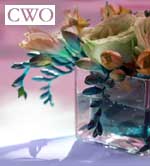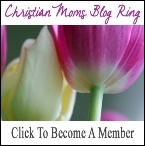Becoming the Woman God Wants Me to Be:
A 90-Day Guide to Living the Proverbs 31 Life
By Donna Partow
Revell, 2008
ISBN: 978-0-8007-3072-7
(This is a shortened version of a detailed review by our friends at
HEvencense. The longer version will be available soon.)
Becoming the Woman God Wants Me to Be is a mixed bag. It has definite strengths and some distinct weaknesses.
On the plus side is
Becoming’s readability, style, tone and format. Partow’s style is brisk and engaging. Her tone is warm, congenial and passionate. Becoming offers readers numerous strategies for change in different areas including physical health, family relationships, finances and spiritual growth in an easy to follow format.
Chapters average three to five pages in length and are easily digested. Also included is a daily Scripture to memorize, a Bible passage, and a guided prayer, followed by Personal and Practical sections. Each week wraps up with a Weekly Check-Up, a Practical Checklist, and a Weekly Reflection and Evaluation.
Sound or Silly?
There is much to commend in Week One, Faith Foundations, and Week Two, Godly Habits. However, bits and pieces of “excuse me?” seep in occasionally. Some readers may file the recommendations on Day 11, Sleep in Peace (p. 56), and Day 12, Be Diligent (p. 59), under Micro-Managing Minutia or Just Plain Silly:
“I’m sure the snooze button was inspired by the devil. It’s his secret weapon against Christians… if he can get you to snooze away the thirty minutes you would have, could have, should have spent with God, the devil has the upper hand against you for the rest of the day.” (p. 61).
Insufficient and Curious?
Becoming the Woman God Wants You to Be stumbles in two areas: sourcing and biblical exegesis. Support from credible sources and/or credentialed experts within this work is insufficient or M.I.A. It also offers some curious biblical exegesis. Since it is beyond the scope of this review to undertake an intensive page-by-page analysis of this book, we’ll focus primarily on these two areas.
Sources?
Take a look at Week Three, Healthy Eating (pp. 68 – 88). Some great ideas and guidelines here, but a fair amount of this material is either attributed to sources with questionable or unlikely credentials, or not sourced at all. In this week the author lays out what foods to eat and avoid, urges a ten-day vegetable and water only diet, and lands at Day 17, Limit Your Sugar Intake (pp. 74 – 77).
Day 17 references data from
www.drbob4health.com/FoodsToAvoid. The information on this site is credited to Dr. Robert F. DeMaria, D.C. (Doctor of Chiropractic) of “Drugless Healthcare Solutions.” The site focuses primarily on “correcting the spine and aiding the nervous system… so the body will draw upon its own ability to heal itself” – not on nutrition or healthy eating specifically.
Wouldn’t a registered dietician or nutritionist make a more credible source here? Additionally, declarative statements such as the following cite dubious sources or appear to be unsourced (further information may be available in other Partow books or resources, but we’re not reviewing the gamut here – just the single title noted.):
-- “The up and down motion of rebounding stimulates the lymphatic system, promoting more efficient cell-cleansing processes.” (p. 101)
-- “In addition to eating right, one of the kindest things you can for yourself… is taking time to bathe. Did you know that bathing is important for your physical well-being? A shower may be convenient, but it doesn’t accomplish the same degree of cleansing a bath can.” (p. 104)
-- “A cleansing bath can purify your body from the toxins that have built up in your body. This is especially important when you start to exercise and eat foods that promote detoxification.” (p. 104)
-- “Furthermore, if toxins are not rapidly eliminated from the body, they can become reassimilated.” (p. 105)
“Points to Ponder”Week Six, Financial Planning (p.134-155) is perhaps the weakest part of this book. The author makes huge assumptions regarding income level, homeowner status, assets and liabilities, investments and the like. Partow tosses dollar amounts - often in the ten of thousands - which may leave some readers shaking their heads. Others may detect a sneering attitude toward “the poor and middle class” (see p. 139). The number of times the word “millionaire” appears borders on rapacious. This reviewer also questions the numerous “become a millionaire” schemes or proponents referenced. Again, sources such as Allen, Brach and Kiyosaki are problematic.
A quick “Google” of Robert Allen shows why he’s earned the title of “con artist,” “snake oil salesman,” “fraud,” and “scammer,” among others. (Check out the Business Program Reviewer for one example.)
“Financial guru” David Bach, author of The Automatic Millionaire, is noted in Days 40 and 79 and elsewhere. Click here for some feedback on Bach’s figures and techniques:
http://www.thetaoofmakingmoney.com/2007/05/31/383.html.
What’s Ringing?“Scam”, “fraud” and “one of the worst” are linked with Robert Kiyosaki (Days 37 and 51. Also see p. 139, etc.). Kiyosaki’s 'Rich Dad' organization recently joined with the Russ Whitney Information Network, “a provider of postsecondary education focused on individual wealth creation and personal success.” This organization’s marketing activities came under grand jury investigation by the United States Attorney for the Eastern District of Virginia in 2006. (
http://www.ripoffreport.com/reports/0/226/RipOff0226341.htm.)
Does this ring any warning bells? If sources are dubious, marginally credible/ethical and possibly illegal, how sound are the principles and practices they promote?
Direct What?In Day 52, Try Direct Marketing, Mary Kay Cosmetics, Pampered Chef and Creative Memories are mentioned (p. 193). Not mentioned is that each company requires a start-up fee or a similar capital investment, some of them hefty. Consultants for these companies typically offer credit and payment plan options to potential clients unable to pay cash for their purchases, contradicting Partow’s advice in Days 38 and 39, Reduce Your Debt (pp. 141 – 144) and Pay Cash (pp. 144 – 147).
Look Before You Leap
The section on “Home Enterprises” (pp. 184-201) may be risky. Legitimate “work from home” businesses can be hard to find. Look before you leap – or invest. (As noted above, Robert Allen and Robert Kiyosaki-isms referenced here may give cause for pause.)
Hmmmm…
In addition to dubious sourcing, alert readers may wonder about some of Partow’s biblical exegeses/applications. In Day 16, Resolve to Control Your Eating Habits, Partow uses Daniel 1:11-15 as a basis for taking “the ten-day vegetable-and-water-resolve challenge.” (p. 74a).
In its historical-cultural context, the Israelites were in Babylonian captivity at this time. They avoided food from King Nebuchadnezzar’s table because it was considered contaminated, having first been offered to idols. Likewise a portion of the wine was poured out on a pagan altar. Daniel and his young comrades avoided meat from the king’s table because ceremonially unclean animals were used and were neither slaughtered nor prepared according to the regulations of the law. Daniel “resolved not to defile himself with royal food and wine” (vs. 8) because of religious convictions. Coupled with Proverbs 31: 14-15, Day 16 seems to miss the point of this passage. (See Romans 14:2 for another view on eating vegetables.)
Also consider this statement from pages 75 - 76 (under Week Three: Healthy Eating):
“I find it fascinating that Adam and Eve both needed new outfits after demonstrating their inability to resist food temptations.”
Is she trying to be funny? Apparently this is a reference to Genesis 3:21, where God provided clothing for Adam and Eve to cover their shame, post-Fall (cf. v.7 and 10). Healthy eating is one thing, but attributing God’s clothing Adam and Eve to a mere “inability to resist food temptations” is curious. It also trivializes the context and consequences of the Fall and Original Sin.
Real Routines?Check out some of the suggested routines, such Day 26 (p. 104-105). Here Partow urges readers to Purify Body and Soul by eating “cleansing foods.” This includes a breakfast of “two eggs scrambled with vegetables (for example, broccoli, onion, garlic, pepper) or a protein shake made with one cup cranwater, one cup frozen blueberries, one-quarter cup frozen cranberries, one tablespoon flax oil, and one scoop of protein powder” (p. 104).
Can you just see a young mom with small children sitting down to a breakfast like that? “Not now, kids, Mommy’s eating her cleansing breakfast!”
Yea or Nay?Some women may find
Becoming the Woman God Wants Me to Be a useful guide or tool. If fill-in-the-blank exercises, check lists, and step-by-step programs appeal to you, this is your book. Ditto those who need help with how to dress, choose colors, accessorize, eat, exercise, live within their means, and “implement the universal 80/20 rule.”
On the other hand, readers may find dubious sourcing, flimsy or unsubstantiated claims and curious application(s) sufficient cause for pause. They may also take issue with matters of opinion, personal preference or taste which this book sometimes raises to the level of religious dogma.
Finally….I’ve taken several Old Testament Literature and Inductive Bible Study courses on Proverbs 31 at the graduate level and elsewhere. I’ve also read a dozen-plus titles and numerous Bible studies on this passage. Becoming the Woman God Wants Me to Be is better than most, but it also has some distinct weaknesses. Be advised and take it with a grain of salt.














